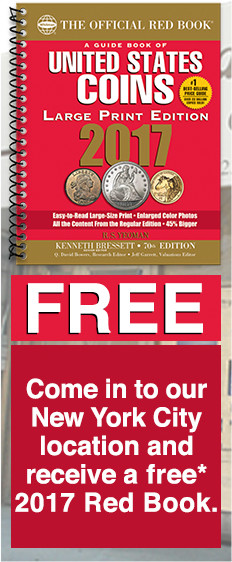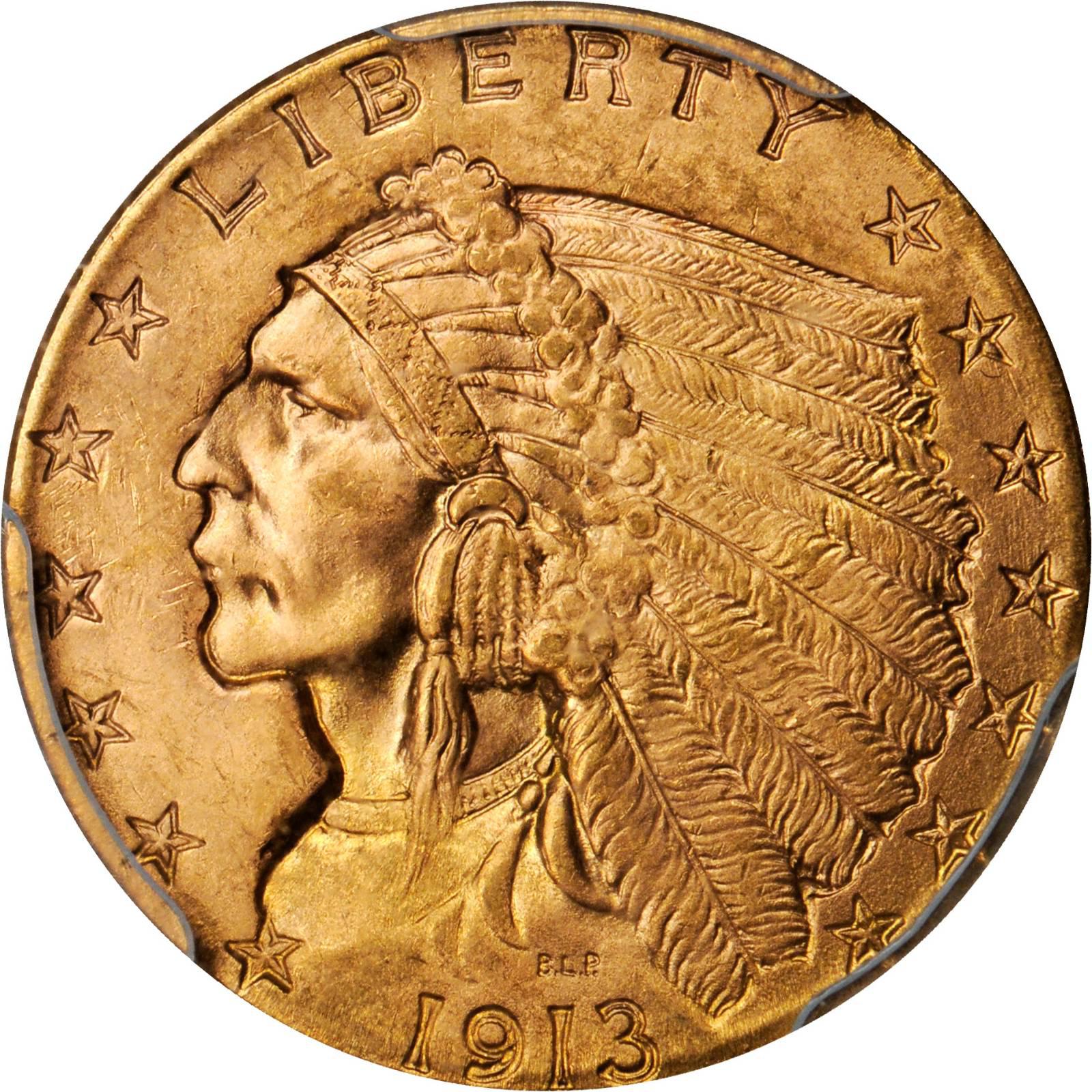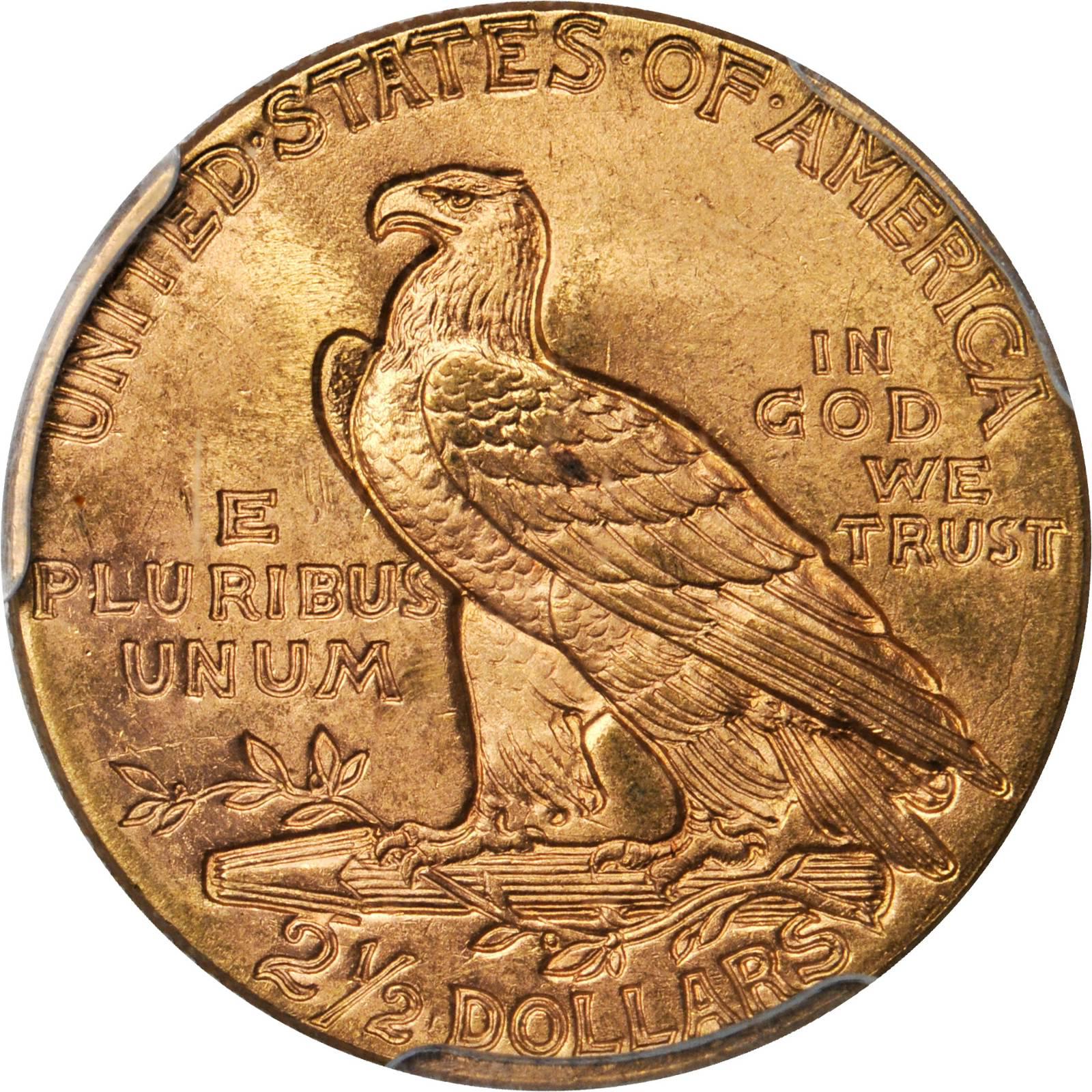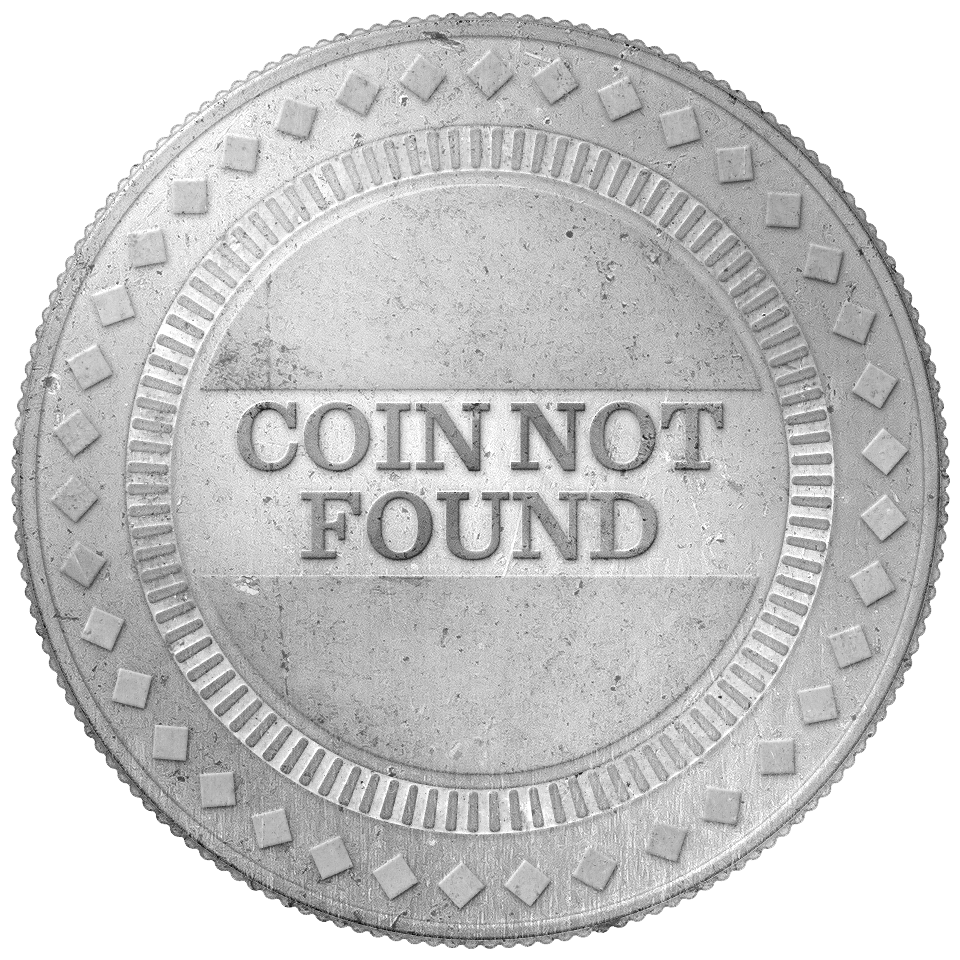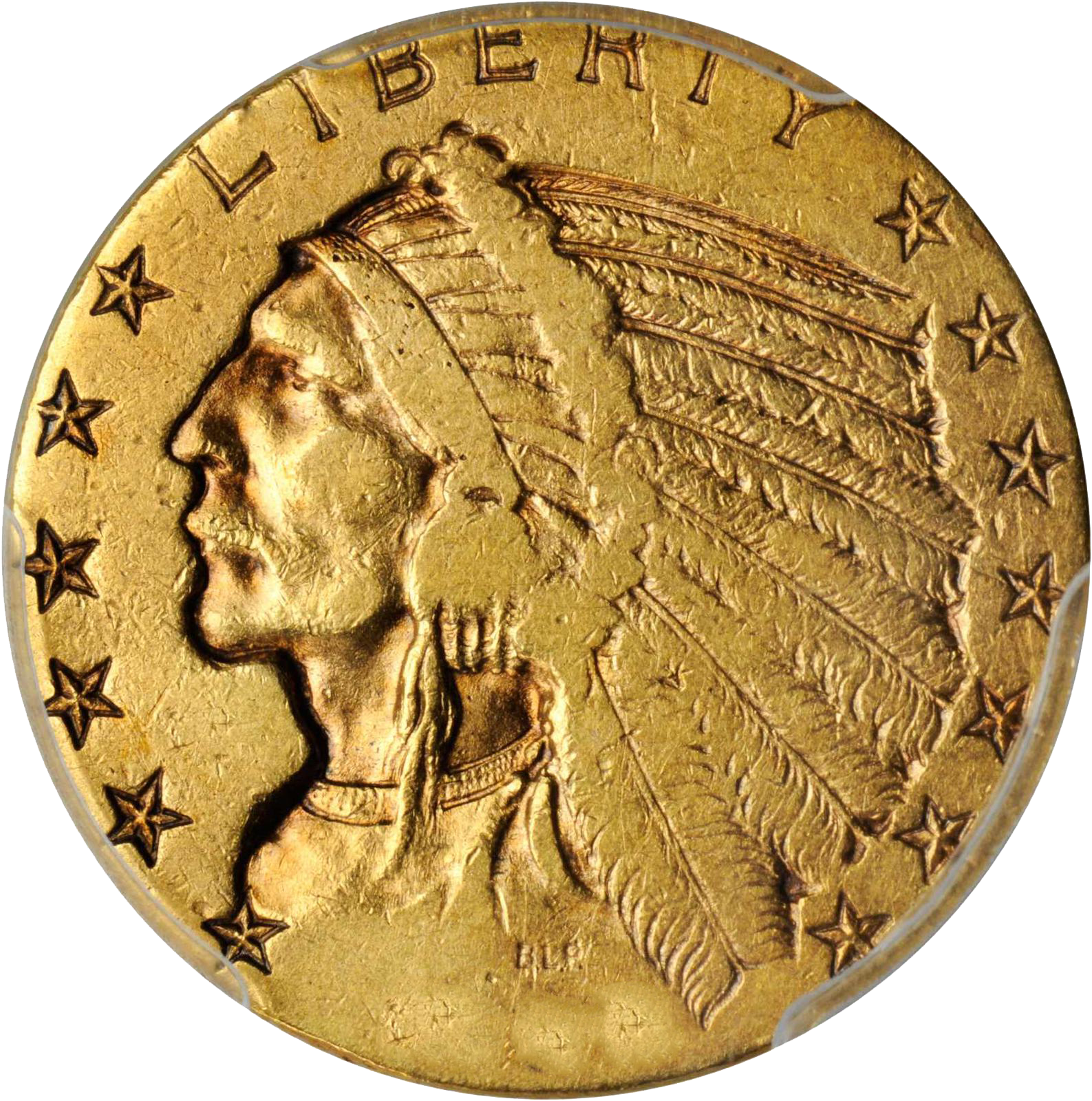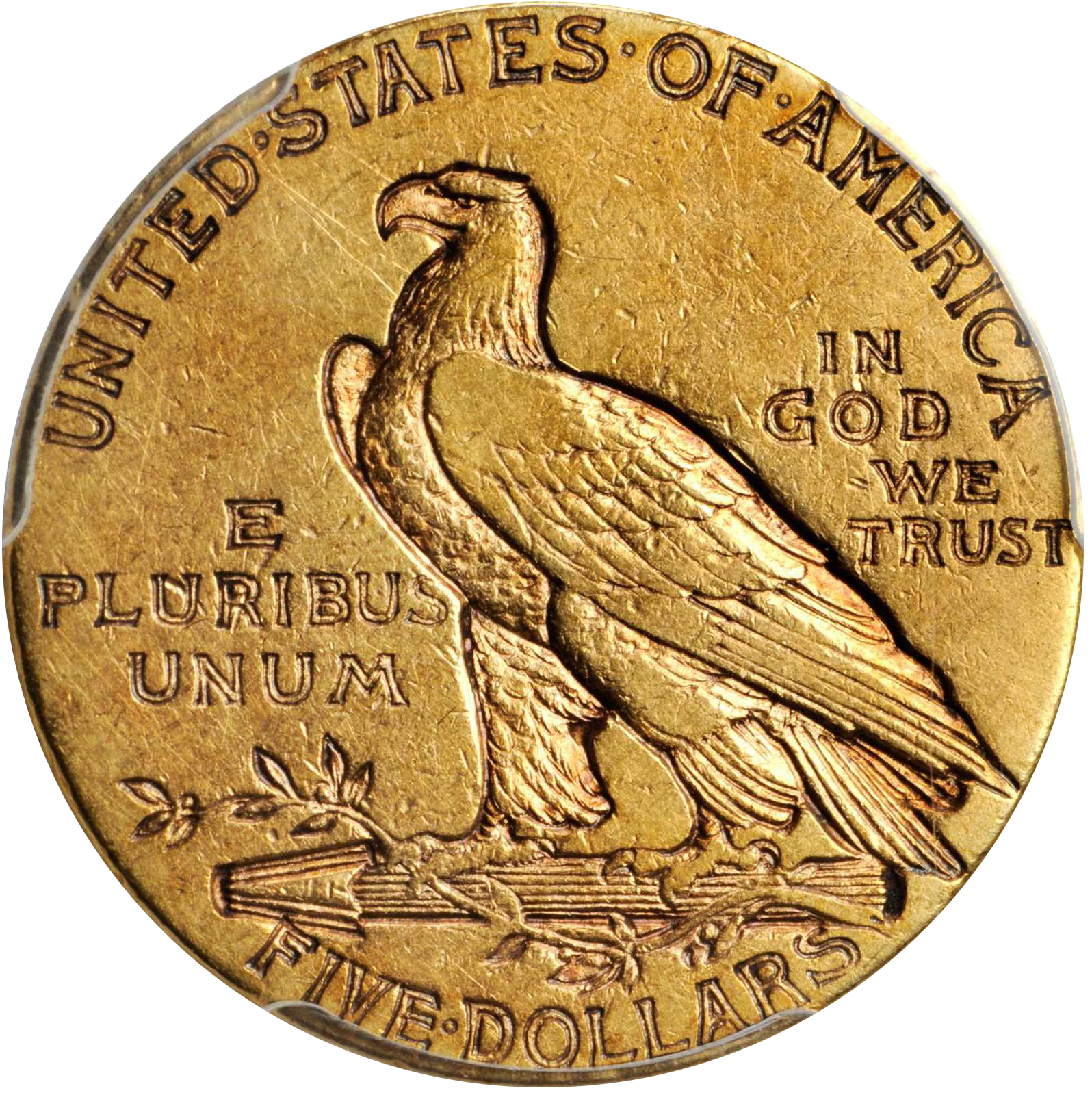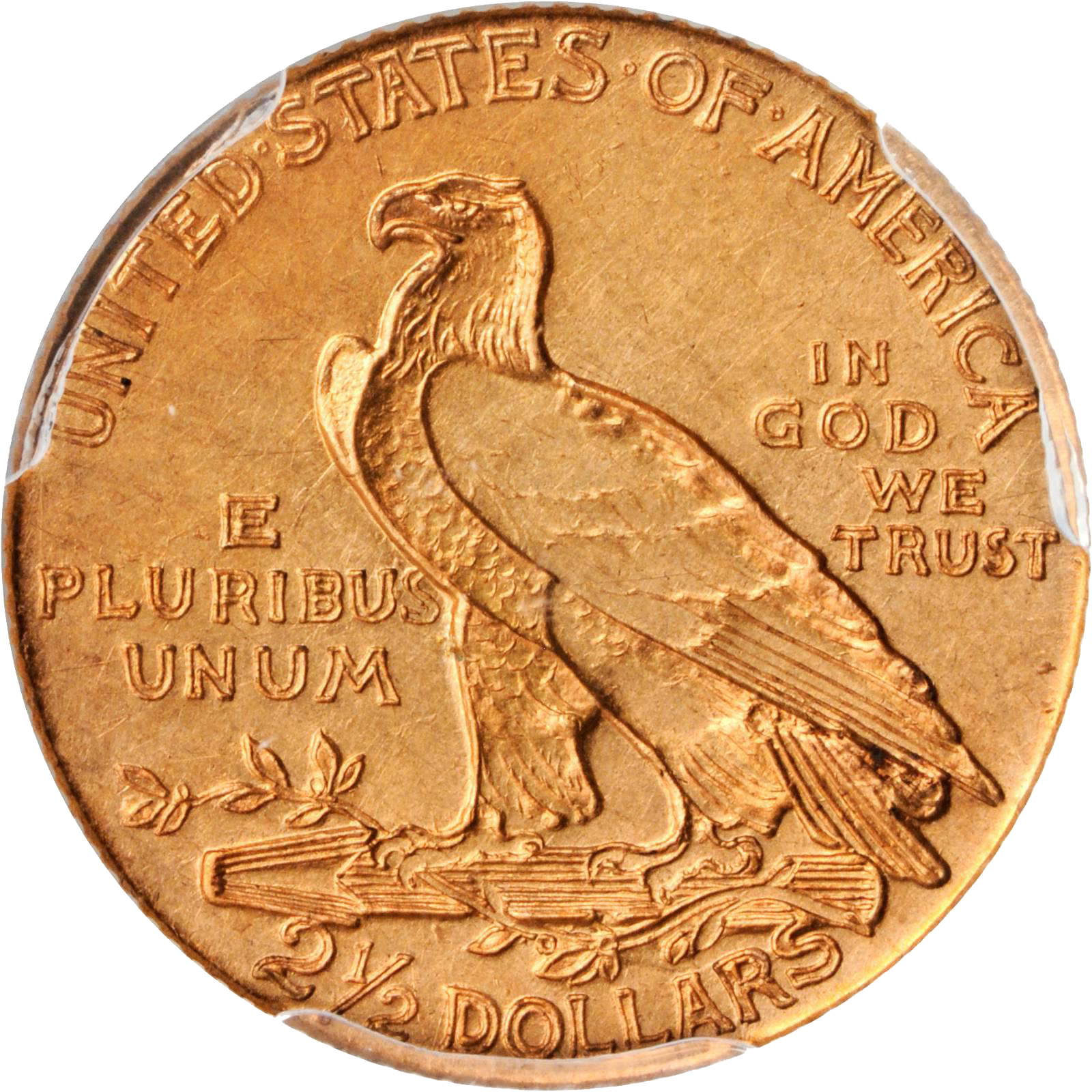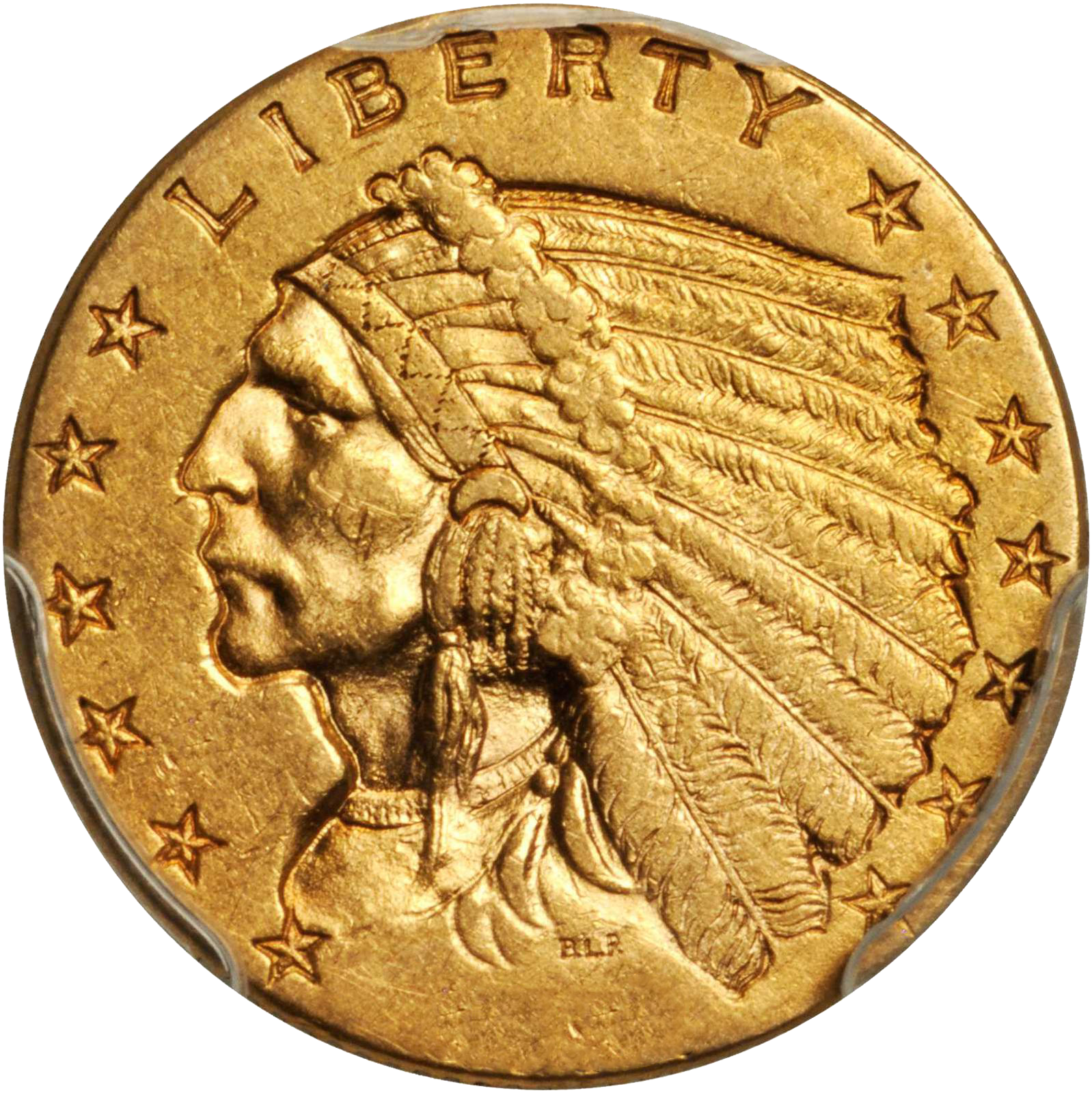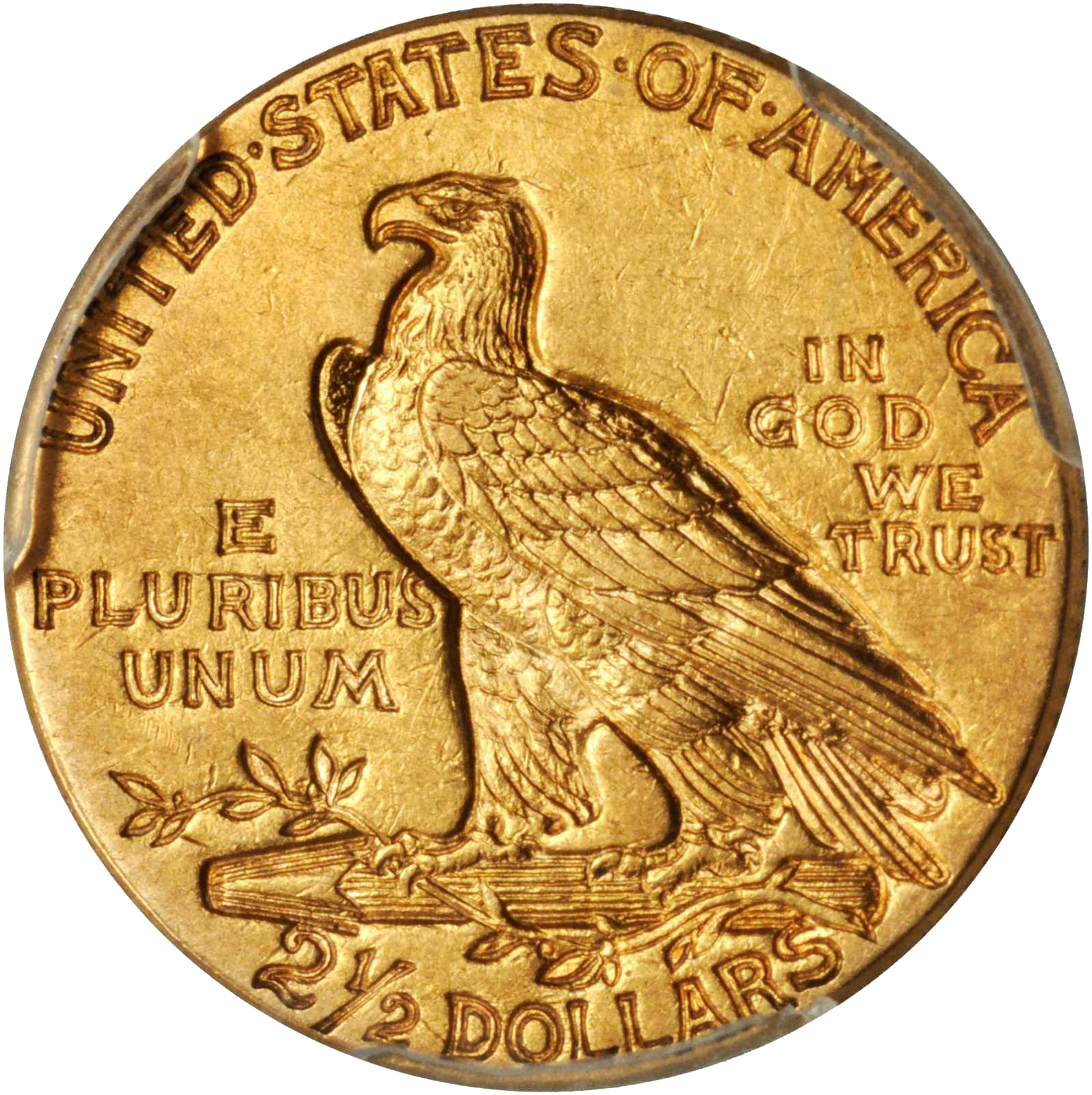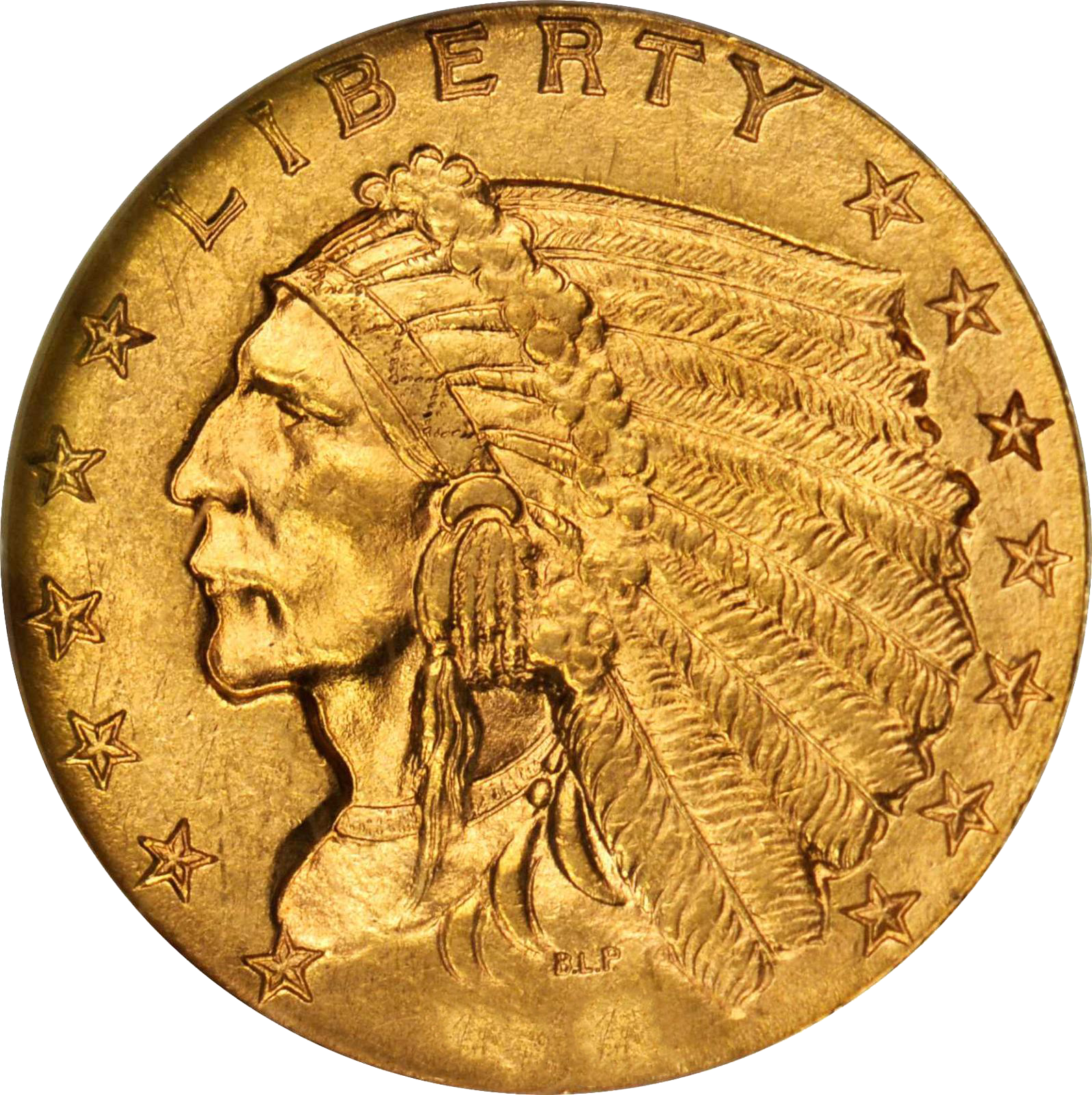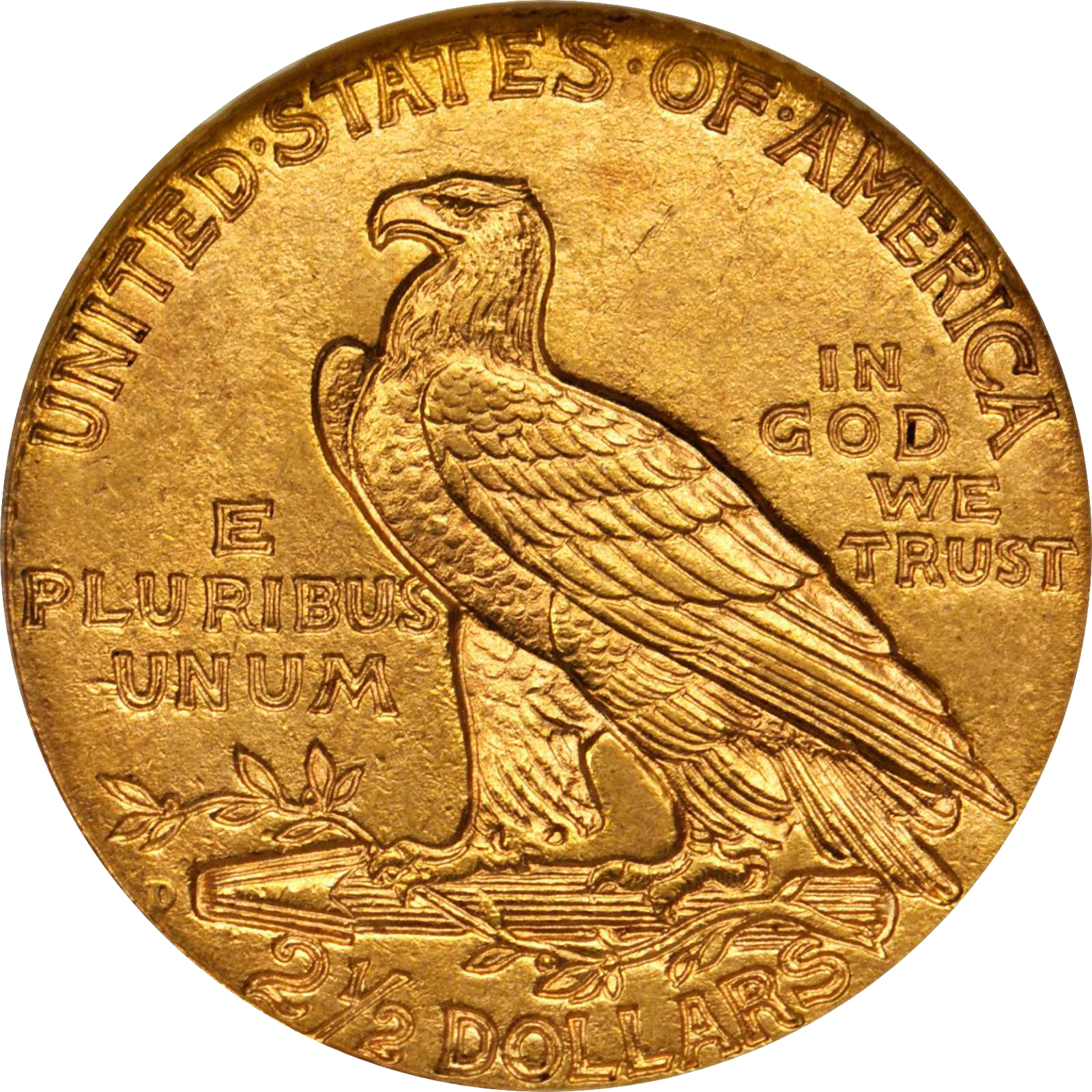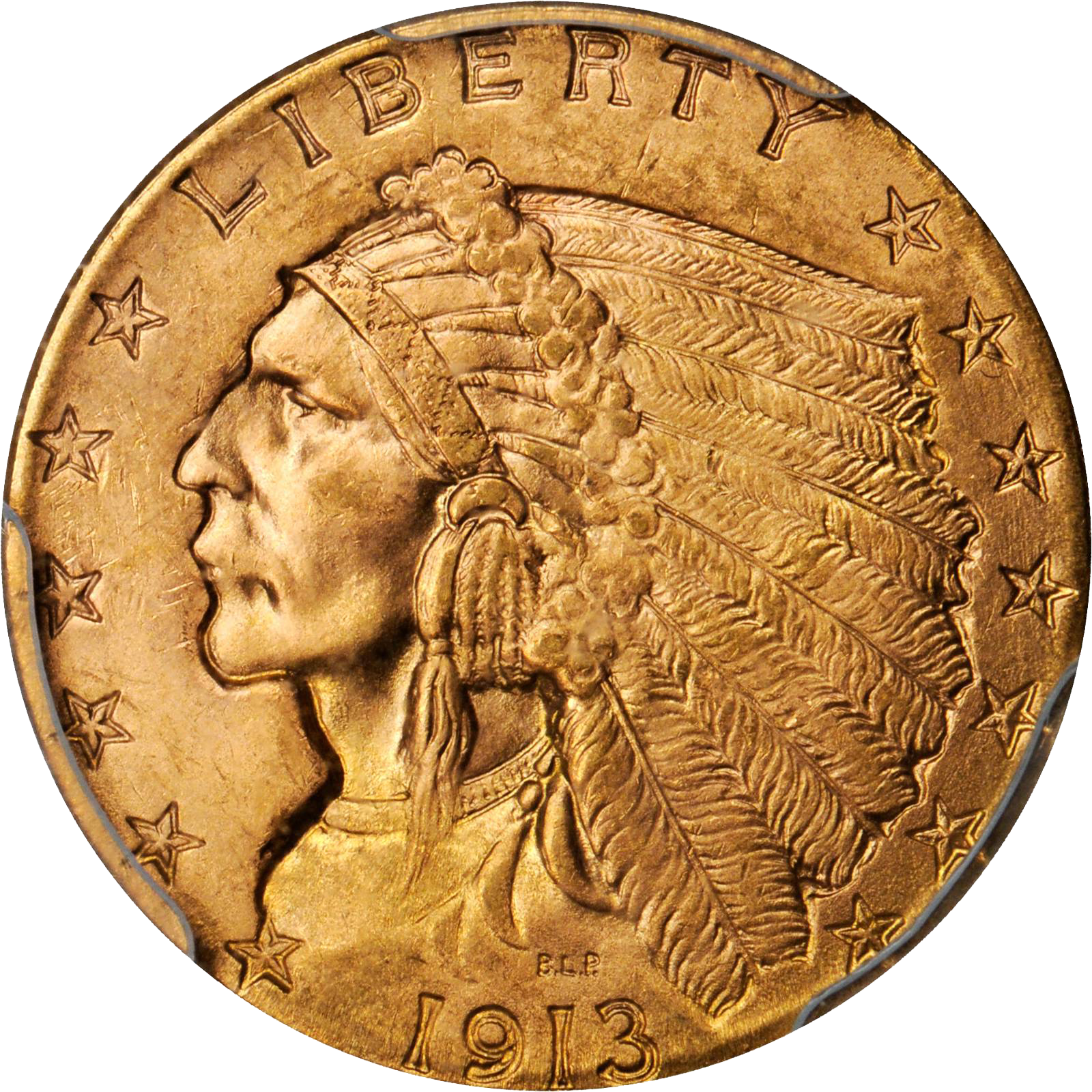Value of 1908 Indian Head $2.50 Gold
$205
$250
$28,200.00
History, Information, and Value of 1913 Indian Quarter Eagle Gold
Value of 1913 Indian Head Quarter Eagle
1913 quarter eagles are typically very sharply struck, with nearly complete definition to the feathers at the central obverse. Most coins exhibit a granular texture, though a few are known with frosty luster that is attractive and worth searching for. The natural color of the coins is often rich yellow-gold, though original surfaces are becoming scarce in the marketplace. Abrasions are particularly problematic for this year as well, as many pieces display distracting marks across the fields.
Though MS-64 examples can be found with little effort, copious abrasions and poor luster guarantees that Gems from the Philadelphia Mint will remain scarce. Coins finer than MS-65 are notably rare; and it is doubted by experts that any examples exceed MS-66+ preservation.
Proofs: The 1913 is one of the rarest of the Proof Indian Head quarter eagles of 1908 to 1915. Mint records indicate that 165 pieces were produced, actually a fairly generous total by the standards of the type. Even so, the 1913 vies with the 1912 as the third rarest Proof Indian Head quarter eagle, with estimates of just 50 to 65 pieces put forth by most numismatic sources.
The text on the Indian Head Quarter Eagle reads as follows. Obverse: LIBERTY; Date; B.L.P. | Reverse: UNITED STATES OF AMERICA; E PLURIBUS UNUM; 2 1/2 DOLLARS; IN GOD WE TRUST
If the text on your coin is not consistent with the text above, you either have a counterfeit, or you have a silver round with gold toning. Silver rounds were introduced recently that bear this same design. With gold toning covering them, it could be easy to confuse your coin for a gold coin. Please look for the word “Copy,” “0.999 Fine,” or “Silver,” before asking our experts what the value of your gold coin is. If you need help determining the condition of your coin, we are rare coin experts and would love to help.




